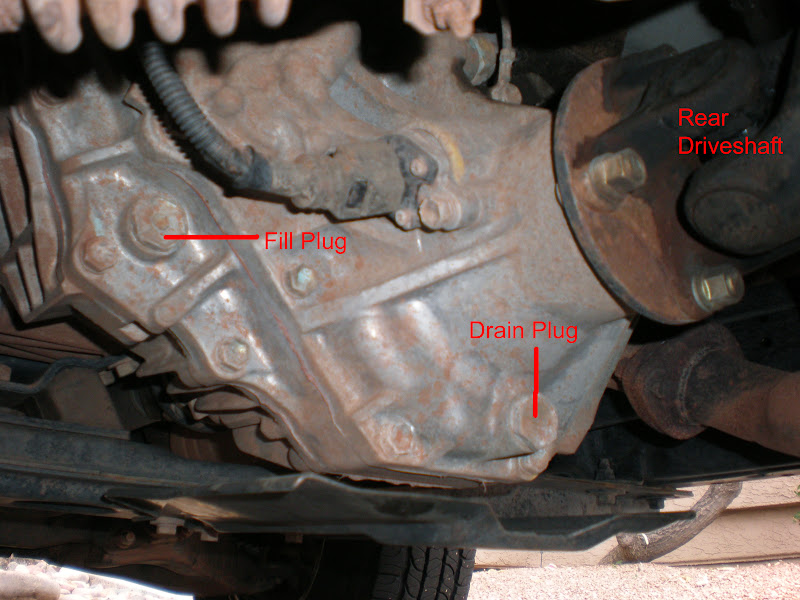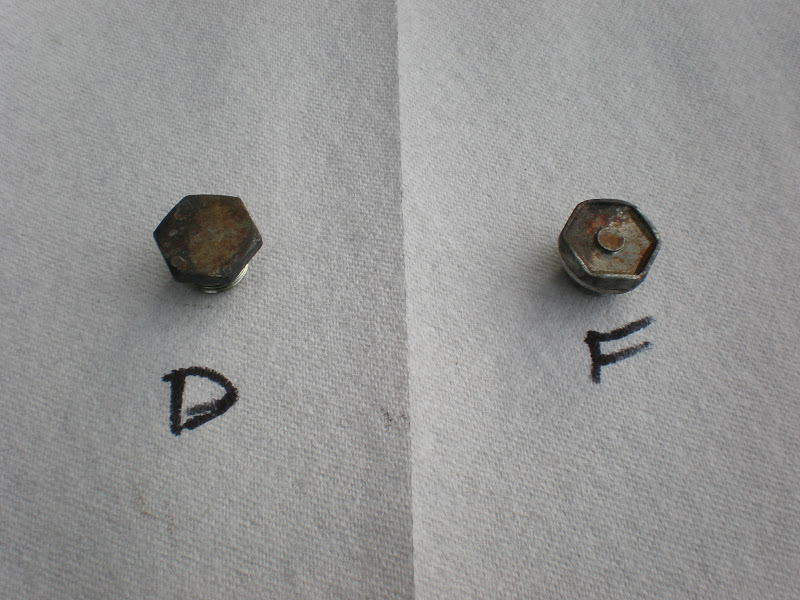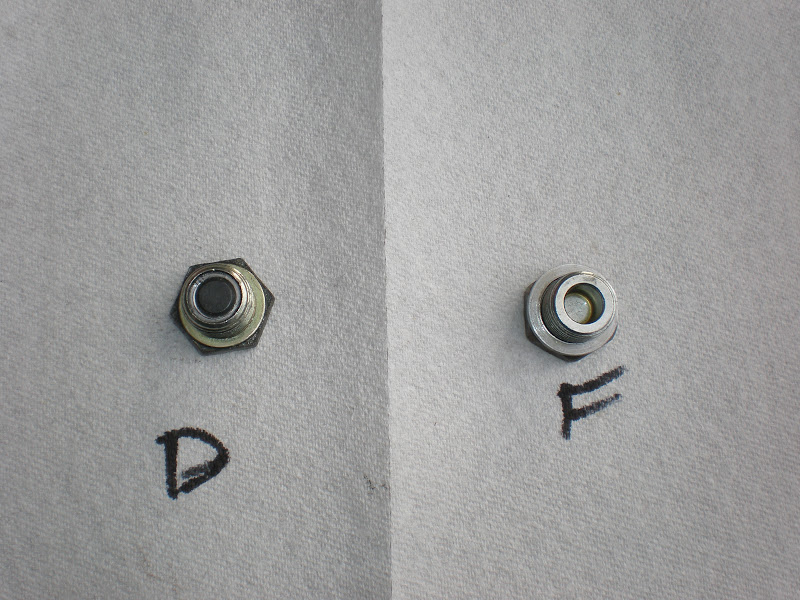For Mexico the 90W straight gear oil would be ideal, but any oil would be fine, that is 75W-90, 80W-90, etc. I am talking about the diffs. The transfer case is 75W-90 by the book. I have used once 75W-140 from Red Line for all three just because that was the only oil available to me at the place and time. Replaced it with the ESI 80W-90 100k miles later. Not recommending, just sharingLand Cruiser 100 Series in Mexico - Opinions on using Valvoline Synpower 75W-90 GL-5 in both differntials and transfer case . My Land Cruiser is 2004 with 140K miles. I live in central Mexico, and if you think Toyota Fluids are expensive in USA the cost here is much higher. One concern I have is that the Synpower is full synthetic. Thoughts would be appreciated as the synpower is locally available and about $20 / liter. At this cost I can afford to change every 30K miles. Thanks in advance.
Navigation
Install the app
How to install the app on iOS
Follow along with the video below to see how to install our site as a web app on your home screen.
Note: This feature may not be available in some browsers.
More options
Style variation
You are using an out of date browser. It may not display this or other websites correctly.
You should upgrade or use an alternative browser.
You should upgrade or use an alternative browser.
DIY Transfer Case Fluid Change How-To (1 Viewer)
- Thread starter Cypher
- Start date
This site may earn a commission from merchant affiliate
links, including eBay, Amazon, Skimlinks, and others.
More options
Who Replied?Not too bad. Worst part was breaking the plugs loose, and then hand pumping the new stuff in. Tedious but glad I did it. Was going to do my front and rear diffs as well, but they're a bit more rusted on so I just hit them with pb blaster and will try again another day. Gotta say the gear oil didn't smell as bad as everyone says it does. Certainly not a good smell, but not in my top 10 worst. Hope my w@lm@rt brand full synth is sufficient for the task. 


15/16" socket worked like a dream. I couldn't get the skid plate off so I just let the old oil drain onto it. No biggie!
15/16" socket worked like a dream. I couldn't get the skid plate off so I just let the old oil drain onto it. No biggie!
Last edited:
You used the aluminum crush washer/gaskets, not the steel ones, right? (Spying your washer packet...)
That is a very good question. They are just some knockoffs I got off Ebay, so I'm not sure. Last person who changed the oil didn't use any washers at all, so hopefully it's an improvement.You used the aluminum crush washer/gaskets, not the steel ones, right? (Spying your washer packet...)
Would it be a problem if they were the steel ones? I feel like it did react to the magnet on the drain plug when I put it on...I got some of mine mixed up -- used a magnet to sort them out. If I recall correctly, the AL ones are flat on both sides. Steel (for the diffs) have a hump/crimp on one side. AL are probably lighter, comparatively.
Yes, all the fluid will drain out at the most unopportune time and make it explode.
Jk jk it should be fine. I'm not sure if the 27ft/lbs though is enough to crush the steel washer
Just keep an eye on it for leaks. Or since it's fresh, just crack it back open swap, if you still have the bottle.
Jk jk it should be fine. I'm not sure if the 27ft/lbs though is enough to crush the steel washer
Just keep an eye on it for leaks. Or since it's fresh, just crack it back open swap, if you still have the bottle.
I'll watch for leaks. I didn't even think about whether I was using the right washers aside from size-wise. D'oh! My t-case skid plate is firmly rusted on so I don't really want to crack it back open again so soon and drain all the nice new oils over the dirty skid plate.Yes, all the fluid will drain out at the most unopportune time and make it explode.
Jk jk it should be fine. I'm not sure if the 27ft/lbs though is enough to crush the steel washer
Just keep an eye on it for leaks. Or since it's fresh, just crack it back open swap, if you still have the bottle.
Thanks for this write up! What model Land Cruiser was this for? I have an fj60 and want to do the sameA few weeks ago I decided it was time to change the transfer case (T-case) fluid and starting doing a bunch of research here on Mud. I found lots of good info in lots of different threads so I thought I would document the work and put everything into one thread. It is definitely a super easy quick onejob. The longest part of the process was waiting for the T-case to drain completely. From start to finish, I was done in 30 minutes including clean-up.
Most of the folks on Mud have replaced the fluid with full synthetic. The most popular seem to be Mobile1, Royal Purple, and Amsoil. A few have used the Amsoil Heavy Gear Oil as they tow on a regular basis. Choosing any of the well known name brands is a safe bet. A fluid hand pump will make the job much easier but the T-case can be done with the standard squeeze bottles. Some Cruiser owners have mentioned the synthetic fluid helps alleviate the gear whine that often comes from the T-case of Cruisers on a cold morning.
Here is what you need:
- 1.4 quarts of Gear Oil GL-5 75W-90
- Fill/Drain plug gaskets/washers which are a couple of bucks each from Toyota (part number: 90430-18008). These are not required and the old ones can be reused of they are still in good shape.
- Latex or similar protective gloves (if you have ever smelt old gear oil, you know that you DO NOT want to get this stuff on your hands)
- 24mm or 7/8in socket/wrench
- 12mm socket/wrench
- Paper or shop towels
- Drain pan (not pictured)
- Torque wrench (not pictured)

It is suggested to drive your Cruiser around a bit before the replacing the fluid. This will warm up the fluid and help in the process of draining the T-case. Park your truck on level ground to ensure proper drain and fill. As with anytime you are going to get under a vehicle, take all the required safety measures and precautions such as using wheel chocks and using the emergency brake. It is a good idea to clean of any loose dirt and grime from the fill and drain plugs before you start. It is important to not introduce any foreign material into the T-case.
If your Cruiser is equipped with the factory T-case skid (or aftermarket skid) remove this first with the 12mm socket for ease of draining. For those who may not be familiar with the T-Case, it is the the center gear box, on the driver's side of the transmission, that the front and rear drive shafts are connected to.

Remove the fill plug with a 24mm socket. This is important since you do not want to drain the T-case and then not be able to get the fill plug off (rule of thumb for all fluid changes).
Position your drain pan under the drain plug and slightly to the rear of the vehicle, the fluid comes out fast and will overshoot your pan if you are not ready for it. Remove the drain plug with a 24mm socket. Do not confuse the drain plug with the fill plug. Take note of the differences as indicated in the picture below (D = Drain Plug, F = Fill Plug).


Let the fluid completely drain from the T-case.
While the fluid is draining this is a good chance to clean up the drain plug. You will most likely notice a small amount of metal shavings on the magnet the drain plug is equipped with. A small amount of shavings is normal wear. If you have lots, it is recommended you get your T-case checked out.

Replace the drain plug with a new plug gasket. Again be sure the plug is clean before replacing. It is not a bad idea to ensure there is a little gear oil on the threads of the plug. Torque the drain plug to 27ft/lbs. It is extremely important to not over tighten the plugs! You will crack the T-case…
Fill the T-case with 1.4 quarts of fluid or until the fluid begins to come out of the fill location. If the vehicle is not parked on level ground, it is recommended that you at least ensure that you get 1.4 quarts into the T-case.
Replace the fill plug with a new plug gasket. Again be sure the plug is clean before replacing. It is not a bad idea to ensure there is a little gear oil on the threads of the plug. Torque the drain plug to 27ft/lbs. It is extremely important to not over tighten the plugs! You will crack the T-case…
Finally, replace your skid plate and you are done!
Now take your old gear oil to a location that can properly dispose it such as Autozone, Checkers, O’Riley, or the like and take pride in some DIY Cruiser maintenance. FYI, gear oil can be mixed with engine oil and recycled at the same time.
If I missed something or you have a good tip to add, post up!
@Cypher
Agree with previous comments... this is basically a PERFECT writeup. Good photos, clear instructions with relevant P/Ns and sets proper expectations.
I was considering letting the local Toyota Dealership do my Axle and XferCase service for a few hundred bucks (because I am always insanely busy and already have TWO project vehicles that need attention). But this seems SO easy... I might just do it myself and put those $$$ back in my own pocket.
Any chance you have a similar writeup for F&R diff fluid service? It's another potentially easy one that I might just tackle if the instructions / cautions were as clearly written as this one.
Thanks for the writeup!
-G
Agree with previous comments... this is basically a PERFECT writeup. Good photos, clear instructions with relevant P/Ns and sets proper expectations.
I was considering letting the local Toyota Dealership do my Axle and XferCase service for a few hundred bucks (because I am always insanely busy and already have TWO project vehicles that need attention). But this seems SO easy... I might just do it myself and put those $$$ back in my own pocket.
Any chance you have a similar writeup for F&R diff fluid service? It's another potentially easy one that I might just tackle if the instructions / cautions were as clearly written as this one.
Thanks for the writeup!
-G
Similar setup except the the volume of fluid. I have dealt with toyota 4x4s since 1990 and I am extremely careful when tightening bolts on aluminum housings. the specified torque may be good when the casing is new, but with age, it may lead to crack the housing. Therefore, I gently snug with a wrench that is about 6 inches long. I in fact do it for the diffs as well.Thanks for this write up! What model Land Cruiser was this for? I have an fj60 and want to do the same
No difference to the transfer case. Make sure you loosen the fill port FIRST before you start draining. Do it on a flat surface, and pump until fluid trickles out of the fill port. Clean the drain bolt magnet before the installation.@Cypher
Agree with previous comments... this is basically a PERFECT writeup. Good photos, clear instructions with relevant P/Ns and sets proper expectations.
I was considering letting the local Toyota Dealership do my Axle and XferCase service for a few hundred bucks (because I am always insanely busy and already have TWO project vehicles that need attention). But this seems SO easy... I might just do it myself and put those $$$ back in my own pocket.
Any chance you have a similar writeup for F&R diff fluid service? It's another potentially easy one that I might just tackle if the instructions / cautions were as clearly written as this one.
Thanks for the writeup!
-G
I have dealt with toyota 4x4s since 1990 and I am extremely careful when tightening bolts on aluminum housings. the specified torque may be good when the casing is new, but with age, it may lead to crack the housing. Therefore, I gently snug with a wrench that is about 6 inches long. I in fact do it for the diffs as well.
Are the torque specs for the plugs assuming "dry" or "wet"? This post mentions getting a little oil on the threads, so I'm assuming wet. The other thread for the rear diff had some back and forth on whether or not to use anti-seize and that got me wondering.
Google recs doing 75% of the dry torque value if the bolt threads are "wet" or lubed.
Google recs doing 75% of the dry torque value if the bolt threads are "wet" or lubed.
I would try not to over-think it 
I went throug a similar concern with the aftermarket (can't remember the name) oil drain valve (vs plug).
What I did is torque by feel (believe spec is 15 ft-lb), then painted a spot on the valve/pan. this would allow me to see if vibration induce rotation occured.
did the same thing to the gazillion nuts/bolts of the dissent no-cut bumper. Seems to be working as bumper hasn't fallen off yet (it is a good bumper)
What I did is torque by feel (believe spec is 15 ft-lb), then painted a spot on the valve/pan. this would allow me to see if vibration induce rotation occured.
did the same thing to the gazillion nuts/bolts of the dissent no-cut bumper. Seems to be working as bumper hasn't fallen off yet (it is a good bumper)

Jack90210
SILVER Star
1) they'll always be a little wet unless you allow it to drain overnight (which is an unreasonable expectation);Are the torque specs for the plugs assuming "dry" or "wet"? This post mentions getting a little oil on the threads, so I'm assuming wet. The other thread for the rear diff had some back and forth on whether or not to use anti-seize and that got me wondering.
Google recs doing 75% of the dry torque value if the bolt threads are "wet" or lubed.
2) I believe that torque specs for bolts that have crush washers are less about "bolt stretch" than they are about deforming the crush washer sufficiently;
3) I use a torque wrench on these bolts and I find that the factory specs work just fine with somewhat wet threads.
Hope that helps.
Similar threads
Users who are viewing this thread
Total: 2 (members: 0, guests: 2)
